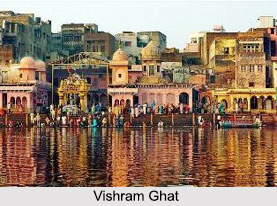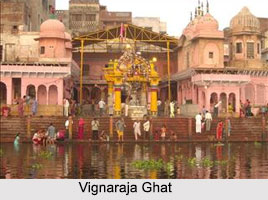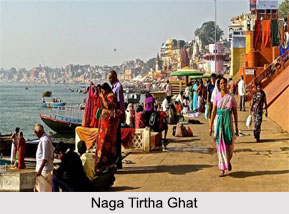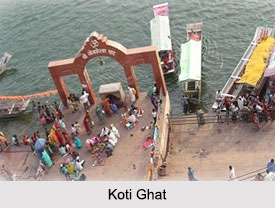 Ghats of Mathura are the sacred spots of Hindus. Mathura is considered as the sacred place for the devotees of Lord Krishna. It is the birthplace of Lord Krishna. Some of the sacred ghats like Vishram Ghat, Brahmand Ghat, Somatirth Ghat, Koti Ghat, Chakrathirth Ghat, Somatirth Ghat Vignaraja Ghat, Dashashwamedh Ghat, Saraswati Sangam Ghat, Samyamana Ghat, Dharapatanaka Ghat, Navtirtha Ghat, Naga tirth ghat and many more ghats were built by the different rulers or social workers of Mathura, Uttar Pradesh.
Ghats of Mathura are the sacred spots of Hindus. Mathura is considered as the sacred place for the devotees of Lord Krishna. It is the birthplace of Lord Krishna. Some of the sacred ghats like Vishram Ghat, Brahmand Ghat, Somatirth Ghat, Koti Ghat, Chakrathirth Ghat, Somatirth Ghat Vignaraja Ghat, Dashashwamedh Ghat, Saraswati Sangam Ghat, Samyamana Ghat, Dharapatanaka Ghat, Navtirtha Ghat, Naga tirth ghat and many more ghats were built by the different rulers or social workers of Mathura, Uttar Pradesh.
Vishram Ghat
Vishram Ghat is located in Mathura city of Uttar Pradesh. It is regarded as the most significant among the 25 ghats of the city. Vishram Ghat is believed that the traditional Parikrama of Brij Bhoomi begins and ends at this ghat.
Brahmand Ghat
Brahmand Ghat is located just a few meters ahead of Raman Reti and Nand Bhawan, along the banks of the Yamuna River. It is considered a sacred place among the Hindus due to some mythological importance.
Vignaraja Ghat
Vignaraja Ghat is also called Ganesha Ghat or Senapati Ghat. It is believed that if one takes bath in this ghat, Vignaraja will remove all the obstacles from one"s path of devotional service.
Dashashwamedh Ghat
Adi Varaha Purana mentioned that, one who bathes in Dashashwamedh Ghat will enjoy the pleasures of heaven. In the past, Asvamedha Yajna (horse sacrifice) was done here for glorifying Lord Krishna.
Saraswati Sangam Ghat
The rivers Yamuna and Saraswati meet at Saraswati Sangam Ghat. One who bathes in this tirtha will receive the qualities of a sannyasi. There is a small Vamana temple next to the bridge which crosses the stream.
Brahma Ghat
According to the Hindu mythology, Lord Brahma did austerities at Brahma Ghat for nearly 1,000 years. It is believed that by taking bath at this Ghat, one will go to Vishnu Loka.
Somatirth Ghat
 Somatirth Ghat is dedicated to the Hindu Moon God. If one bathes at this tirtha, one gets the happiness of living on Soma loka. This place is known as Krishna Ganga Ghat. It is called so because Lord Krishna manifested Ganges in this place. The river Ganges and Yamuna meet at this place.
Somatirth Ghat is dedicated to the Hindu Moon God. If one bathes at this tirtha, one gets the happiness of living on Soma loka. This place is known as Krishna Ganga Ghat. It is called so because Lord Krishna manifested Ganges in this place. The river Ganges and Yamuna meet at this place.
Naga Tirtha Ghat
Naga tirth ghat is the best of all tirthas. By taking bath here, one can attain heaven and by dying here one is freed from rebirth.
Koti Ghat
If a person takes bath at Koti Ghat and offers charity, he will be worshiped in Vishnu Loka. It is said in the Vishnu Purana that he will get the benefits of bathing in koti (million) tirthas i.e., bathing in million holy ghats and rivers and giving charity of koti cows. If one performs shraddha at this place, all his ancestors will be liberated from the sins.



















